Agriculture
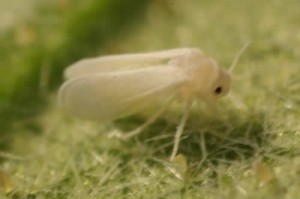
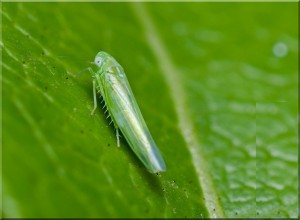
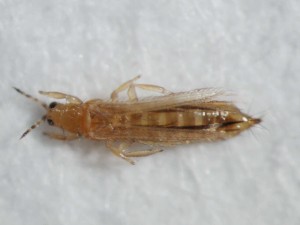
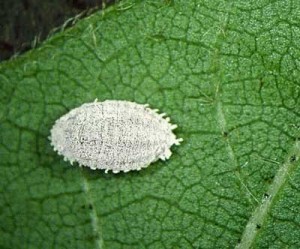


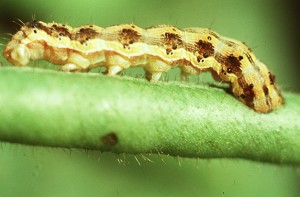

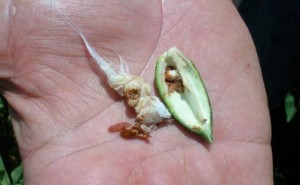
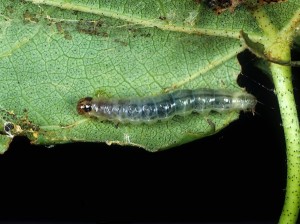
- Monthly Activities Of Cotton Cultivation
MONTHLY ACTIVITIES OF COTTON CULTIVATION January This month is perfect time for seed cotton collection. Seed cotton should be collected in sunny days when fog is not present. From 10am to 4pm is better time for seed collection. Farmer should keep...
- Cotton
Cotton means, ?thread?. Cotton is an in determinant plant. There are four cultivated species of cotton. · Gossipium arborium · Gossipium herbacium · Gossipium hirsutum · Gossipium barbaden The first two species are called Old-world cotton. It...
- Army Worm, Aphid Attack: Experts Warn Cotton Growers
Friday, July 19, 2013 Punjab Agriculture Department has warned the growers on Thursday that chances of attack of army worm and aphid on cotton crop have increased due to recent rains. Agricultural experts said that growers can save their crops from damages...
- Pest Of Cotton
North Carolina Cooperative Extension Extracted from INSECT and related PESTS of FIELD CROPS (AG-271) Dated 5/82 Placed on the Web 10/94 by the Center for Integrated Pest Management, NCSU In 1980, cotton was planted on 25,506 hectares (63,000 acres) of...
- Cotton Plant- Characteristic Features
Introduction to cotton plant Domestic cotton crops cultivated a unique origin and history. Wild ancestors of modern cotton varieties were perennial vines that inhabited many different Africa, Arabia, Australia and geographic regions including Mesoamerica,....
Agriculture
Top 10 Insect Pests of Cotton in Pakistan
Insects represent a widely studied group of arthropods having diversity in their habitat and life forms. Adaptation of insects may be directly correlated with the successful evolution history. Scientists are working day and night to find the successful adaptation of insects to their environment. The plants on which insect feeds are called as host plants. Some insects are monophagous and feed on one plant species. Others are called as polyphagous and are having a diverse range of feeding and living. Although the pest management techniques are still proving to be reasonable to some extent but the insects are coming up with an ever increasing resistance mechanism that are supporting their life forms as well as strengthening their next generations.
Cotton serves as a perfect host for variety of insects. Cotton is widely grown in South Asia mainly due to the perfect atmospheric and topographic features. Insect pests of cotton in Pakistan represent the greatest diversity in the whole region. More than 1300 species of insects are found attacking on Cotton crop and more than 93 insects and mites are found damaging for the cotton crop in Pakistan.
10. Whitefly

Bemisia tabaci is said to be the most notorious pest of American cotton mainly due to its ability to transmit the CLCV also called as the Cotton Leaf Curl Virus. Mainly this insect pest damages the cotton crop in four ways. It sucks the cell sap and results in loss of vigor. It also injects the toxic saliva that results in a great damage to the cotton leaves. It sucks the cell sap and secretes the honey dew that invites the infestation of sooty mould. Sickly black appearance of the plant results in less absorption of sunlight and the photosynthesis process is adversely affected in one way or the other. Transmission of CLCV is one of the most important damage of cotton whitefly.
9. Jassid

Amrasca biguttula is one of the most damaging pests of cotton crop in Pakistan. Damage of Cotton Jassid is very different as compared to that of other insect pests of cotton. Cup formation of leaves is observed in the peak of its attack. It also secretes the toxic secretions that are passed along with the saliva and the plant metabolism gets a greater shock due to the very presence of this particular insect pest of cotton. It also disturbs the boll formation as the boll formation is reduced after the attack of Jassid. It also affects the ladyfinger crop and also causes a greater damage to the winter vegetables which serves as an alternate source of food when the cotton season is not in progress.
8. Thrips

Thrips tabaci is one of the most threatening pests of cotton, onion and garlic. The rasping sucking mouth parts of this insect damages the vegetative as well as the reproductive parts of many crops. In cotton the attack of thrips is greatly observed on the flowers and leaves where it congregates near the base of flowers or the leaves. Most of the farmers get the confusion in determining the attack of thrips. The mode of damage is different as compared to other insect pests of cotton. Crumpled and silvery appearance of leaves is the main sign of the thrips attack on American cotton. Insect Pest Management should be well directed in order to control the sucking as well as the chewing insect pests of cotton crop. In many countries like USA thrips is considered to be the vector of many viruses like the streak virus of peas and yellow spot of pineapple.
7. Mealy Bug

Phenococcus gossypiphilous was first reported in 2005 in Pakistan and in 2006-07 it affected the whole cotton belt of Pakistan. Life cycle of mealy bug is very rapid and it feeds on almost all kind of vegetables and flowers mainly due to the polyphagous habit. It damages the cotton crop by sucking the cell sap and decreasing the plant vigor. It also secretes some toxic saliva secretions that inhibit the growth and disturbs plant metabolism. Sometimes it can also secrete the cottony wax and when the attack exceeds the threshold level honey dew also increases in percentage and so is the sooty mold. Chemical control is not the only solution because the biological control of mealy bug served to control most of the pest population in the Cotton belts of Pakistan. IPM of any insect should focus on all the possible methods and techniques to ensure the discouragement of pest populations in a particular habitat or area.
6. Dusky Cotton Bug

Oxycarenus laetus was considered to be the minor pest of Cotton but now it is going to become the possible threat to the early and late cotton crop in Pakistan. Sucking behavior of this insect disturbs the cotton crop at early as well as the late stages. It sucks the sap from the reproductive parts of plants and it can also deteriorate the seed quality. Besides damaging the seeds and the reproductive parts it also deteriorates the lint quality resulting in poor ginning of cotton fibers. It gives the staining to the lint and the lint of low quality gets the lower price in market. It is found on cotton, ladyfinger and other malvaceous plants.
5. Army Worm

Spodoptera litura is counted among the major insect pests of cotton crop in Pakistan. It damages the crop due to its chewing behavior. Mode of damage of armyworm is different as compared to that of other insect pests of cotton. Most important sign of its attack is the damaged leaves that are in the form of empty areas. It feeds the leaves in between the veins and the veinlets. Skeleton of the leaves dries up due to the inactivation of photosynthetic processes. This result in the loss of vigor of plant and the quality of boll is affected. Attacked fields have lower yield of bolls as compared to that of the healthy fields. IPM practices are there as there are many types of biological as well as cultural control methods of this insect. If none of the control methods seem to be working then chemical control is perhaps the last and considered to be most effective option for the control of insect pests of cotton. It is not a problem in BT Cotton.
4. American Boll Worm

Helicoverpa armigera is also called as the American bollworm and it is an important pest of chickpea and American Cotton. It is a polyphagous insect and is considered to damage a range of vegetable and other crops in Pakistan as well as other countries of South Asia. When it attacks the early stages it hollows the squares from inside and the damaged squares fall on the ground. It directly affects the cotton crop and results in lower yields. When the boll is mature it makes a prominent hole on the boll and results in the damage of the crop. The damage of American Bollworm is not observed in a uniform behavior rather it attacks in patches and affects the crop in patch. It shifts from one boll to another and damages dozens of bolls during life time. Biological control of this insect is the best option but in harsh conditions when biological control is not effective, chemical control serves as the only option for the control of American bollworm. It is not a problem in BT Cotton.
3. Spotted Boll Worm

Earias insulana is also called as the spotted bollworm of cotton. It damages many parts of cotton crop and most of the times it is found boring in the reproductive as well as the vegetative parts of cotton. Despite of its lower attack it is a threat to the cotton in the early season. Premature opening of cotton boll is said to be the most important indication of the attack of spotted bollworm. It deteriorates the lint quality and results in lesser profits. It is not a problem in BT Cotton.
2. Pink Boll Worm

Pectinophora gossypiella is one of the most destructive pests of cotton crop in Pakistan. It attacks the flowering stage when the female lays eggs on the base of flower. The larvae make a very small hole and move inside the flower. The affected boll fails to open or it opens in a very awkward fashion indicating the attack of pink boll worm. It hibernates in between the seeds and Double Seeds are also the best indication of the damaged seeds. Farmers should avoid the use of Double Seeds that are stuck together by the silken threads of pupal stage of this pest. Cotton sticks serve as the best hiding place for this insect. It is not a problem in BT Cotton.
1. Cotton Leaf Folder

Sylepta derogata is also called as the cotton leaf folder. As the name is indicating the pest makes the leaves to roll. The older larvae roll the edges of leaves with the help of silken threads and feed on the leaf tissues after making roll. American cotton is worse affected. It is not a problem in BT Cotton. Like all the other pest of cotton the control of this pest should be planned after the determination of threshold levels. Biological control is considered to be optimum in case of the ideal conditions of temperature and humidity. During harsh conditions, chemical control is only option left. Attack of this pest is less on Native Cotton or Local Cotton.
Source:http://www.seetoptens.com/
- Monthly Activities Of Cotton Cultivation
MONTHLY ACTIVITIES OF COTTON CULTIVATION January This month is perfect time for seed cotton collection. Seed cotton should be collected in sunny days when fog is not present. From 10am to 4pm is better time for seed collection. Farmer should keep...
- Cotton
Cotton means, ?thread?. Cotton is an in determinant plant. There are four cultivated species of cotton. · Gossipium arborium · Gossipium herbacium · Gossipium hirsutum · Gossipium barbaden The first two species are called Old-world cotton. It...
- Army Worm, Aphid Attack: Experts Warn Cotton Growers
Friday, July 19, 2013 Punjab Agriculture Department has warned the growers on Thursday that chances of attack of army worm and aphid on cotton crop have increased due to recent rains. Agricultural experts said that growers can save their crops from damages...
- Pest Of Cotton
North Carolina Cooperative Extension Extracted from INSECT and related PESTS of FIELD CROPS (AG-271) Dated 5/82 Placed on the Web 10/94 by the Center for Integrated Pest Management, NCSU In 1980, cotton was planted on 25,506 hectares (63,000 acres) of...
- Cotton Plant- Characteristic Features
Introduction to cotton plant Domestic cotton crops cultivated a unique origin and history. Wild ancestors of modern cotton varieties were perennial vines that inhabited many different Africa, Arabia, Australia and geographic regions including Mesoamerica,....
